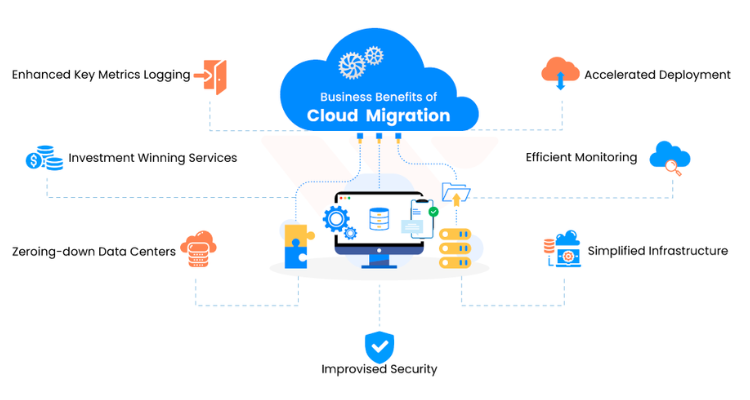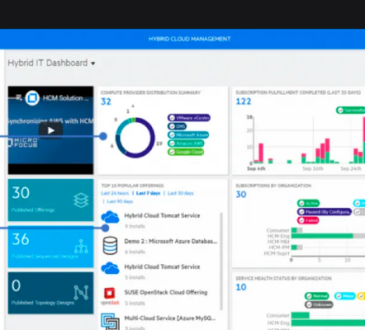
In the era of digital transformation, organizations across industries are increasingly recognizing the benefits of migrating their IT infrastructure and applications to the cloud. However, the process of cloud migration is complex and requires careful planning, execution, and expertise. This is where cloud migration consulting services play a crucial role. In this article, we will explore everything you need to know about cloud migration consulting, including its definition, key benefits, the consulting process, best practices, and considerations for a successful cloud migration journey.
Contents
Understanding Cloud Migration Consulting

Cloud migration consulting refers to the professional services offered by experienced cloud consultants to guide organizations through the process of moving their existing IT assets, applications, and infrastructure from on-premises environments to the cloud. These consultants possess deep knowledge and expertise in cloud technologies, migration strategies, security, and governance, enabling them to provide valuable insights and assistance throughout the migration journey.
Key benefits of cloud migration consulting include:
Expert Guidance: Consultants bring extensive experience and knowledge, helping organizations make informed decisions regarding migration strategies, cloud platform selection, and optimal architecture design.
Risk Mitigation: Consultants assess potential risks and challenges associated with migration and develop mitigation strategies to ensure a smooth transition.
Cost Optimization: Consultants identify cost-saving opportunities, recommend appropriate cloud services, and assist in optimizing cloud resource usage to achieve cost efficiency.
Time and Resource Efficiency: Consultants streamline the migration process, leveraging best practices and automation tools, which saves time and minimizes the impact on internal resources.
The Cloud Migration Consulting Process
Successful cloud migration requires a well-defined and structured approach. Cloud migration consulting typically involves the following key steps:
Discovery and Assessment:
Understanding the organization’s current IT landscape, business goals, and requirements.
Assessing the readiness of applications and infrastructure for migration.
Identifying dependencies, performance requirements, and potential migration challenges.
Strategy and Planning:
Defining a migration strategy based on the organization’s goals and requirements.
Determining the target cloud platform (such as Azure, AWS, or Google Cloud) and selecting the appropriate migration approach (lift-and-shift, re-platforming, or refactoring).
Creating a detailed migration plan with timelines, resource allocation, and risk mitigation strategies.
Architecture Design:
Designing the target cloud architecture, considering factors such as scalability, availability, security, and compliance.
Determining the optimal deployment model (public, private, or hybrid cloud) and designing network connectivity and data integration patterns.
Implementation and Migration:
Setting up the cloud environment, configuring networking, security, and identity and access management (IAM) settings.
Migrating applications, data, and infrastructure to the cloud using appropriate migration tools and techniques.
Conducting thorough testing and validation to ensure a successful migration with minimal disruption.
Optimization and Governance:
Optimizing cloud resources, ensuring cost-effectiveness and scalability.
Implementing governance frameworks, including security controls, monitoring, and compliance policies.
Establishing efficient operational processes, such as backup and disaster recovery procedures.
Post-Migration Support and Training:
Providing ongoing support to address any issues that arise after migration.
Training internal IT teams on managing and optimizing cloud resources.
Continuously monitoring and optimizing the cloud environment for performance and cost efficiency.
Best Practices for Cloud Migration Consulting

To maximize the benefits of cloud migration consulting, organizations should follow these best practices:
Establish Clear Business Goals: Define the desired outcomes of cloud migration in terms of cost savings, scalability, agility, and improved performance.
Conduct a Comprehensive Assessment: Perform a thorough assessment of the existing IT environment, applications, and infrastructure to identify dependencies, performance bottlenecks, and potential challenges.
Develop a Well-Defined Migration Strategy: Create a migration strategy tailored to the organization’s goals and requirements, considering factors such as the complexity of applications, data sensitivity, and migration timeline.
Prioritize Applications: Prioritize applications based on their criticality, complexity, and dependencies. Start with low-risk applications to gain experience and confidence before migrating mission-critical systems.
Optimize Applications for the Cloud: Assess applications for cloud suitability and consider modernization options such as refactoring or re-platforming to leverage cloud-native capabilities and improve performance.
Design for Scalability and Resilience: Design the target cloud architecture to be scalable, resilient, and highly available. Leverage cloud services such as auto-scaling, load balancing, and distributed storage to optimize performance.
Implement Robust Security and Compliance: Incorporate security and compliance measures throughout the migration process. Implement appropriate access controls, encryption, and monitoring to ensure data protection and regulatory compliance.
Test Rigorously: Conduct thorough testing before, during, and after migration to identify and resolve any issues. Test performance, functionality, and data integrity to ensure a smooth transition.
Train and Educate Staff: Provide training and knowledge transfer to internal IT teams to ensure they have the necessary skills to manage and optimize the cloud environment effectively.
Monitor and Optimize: Establish monitoring and optimization processes to continuously monitor the performance, security, and cost of the cloud environment. Implement automation and analytics tools to identify optimization opportunities.
Considerations for Successful Cloud Migration Consulting
While engaging in cloud migration consulting, organizations should consider the following factors to ensure a successful migration:
Communication and Stakeholder Management: Effective communication and stakeholder engagement are crucial throughout the migration process. Ensure clear communication channels and provide regular updates to all stakeholders.
Change Management: Prepare employees for the changes that come with cloud migration. Educate them about the benefits, address concerns, and provide training to facilitate a smooth transition.
Data Migration Strategy: Develop a data migration strategy that considers data volume, complexity, and potential downtime. Evaluate options such as bulk transfer, incremental migration, or hybrid approaches to minimize disruption.
Network Connectivity: Assess network requirements and ensure sufficient bandwidth and connectivity between on-premises infrastructure and the cloud environment. Consider network latency and security measures during data transfer.
Compliance and Regulatory Requirements: Understand the compliance and regulatory obligations relevant to the organization’s industry and geographic location. Ensure that the chosen cloud platform meets the necessary certifications and compliance standards.
Vendor Selection: Choose a reputable cloud service provider (CSP) or consulting partner with a proven track record in cloud migration. Consider factors such as experience, expertise, industry knowledge, and customer references.
Cost Optimization: Develop a cost optimization strategy from the outset. Analyze pricing models, leverage cost estimation tools, and implement governance practices to optimize cloud spending and avoid unexpected expenses.

Backup and Recovery: Establish robust backup and recovery mechanisms for data and applications in the cloud. Define recovery point objectives (RPOs) and recovery time objectives (RTOs) to ensure business continuity.
Performance Monitoring and Optimization: Implement monitoring tools and establish performance benchmarks to proactively identify and address performance bottlenecks. Continuously optimize resource allocation and configurations to ensure optimal performance.
Continuous Improvement: Cloud migration is not a one-time event; it is an ongoing journey. Continuously evaluate the effectiveness of the cloud environment, identify areas for improvement, and iterate on the migration strategy to maximize the benefits.
Conclusion
Cloud migration consulting plays a vital role in guiding organizations through the complex process of migrating to the cloud. By leveraging the expertise and experience of cloud consultants, businesses can navigate the challenges of cloud migration and unlock the numerous benefits that the cloud offers, including increased scalability, cost efficiency, and improved agility. By following best practices such as conducting a comprehensive assessment, developing a well-defined migration strategy, prioritizing applications, and implementing robust security measures, organizations can ensure a successful cloud migration journey. It is essential to consider factors such as communication, change management, data migration, compliance requirements, and ongoing optimization to achieve long-term success. With the right cloud migration consulting partner, organizations can embark on their cloud journey with confidence, leveraging the full potential of cloud technologies to drive innovation and growth in the digital era.



